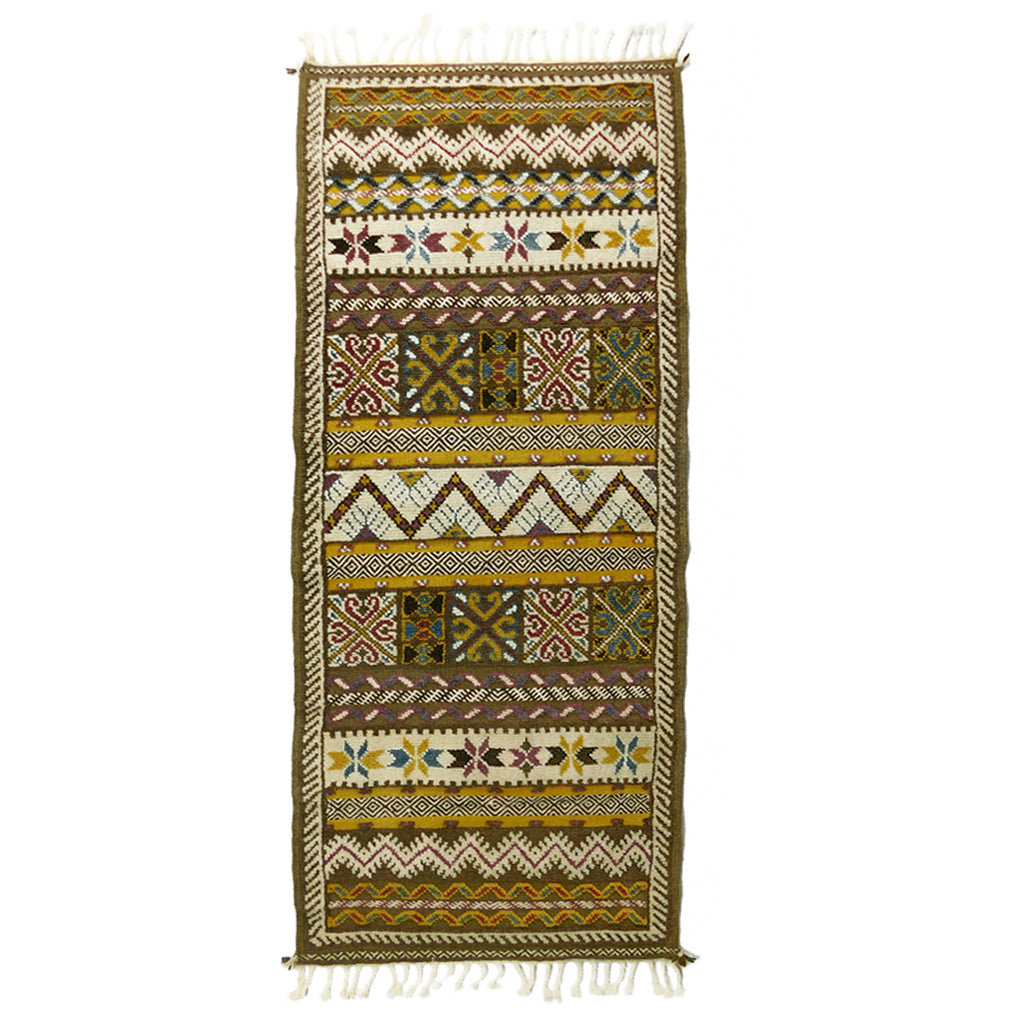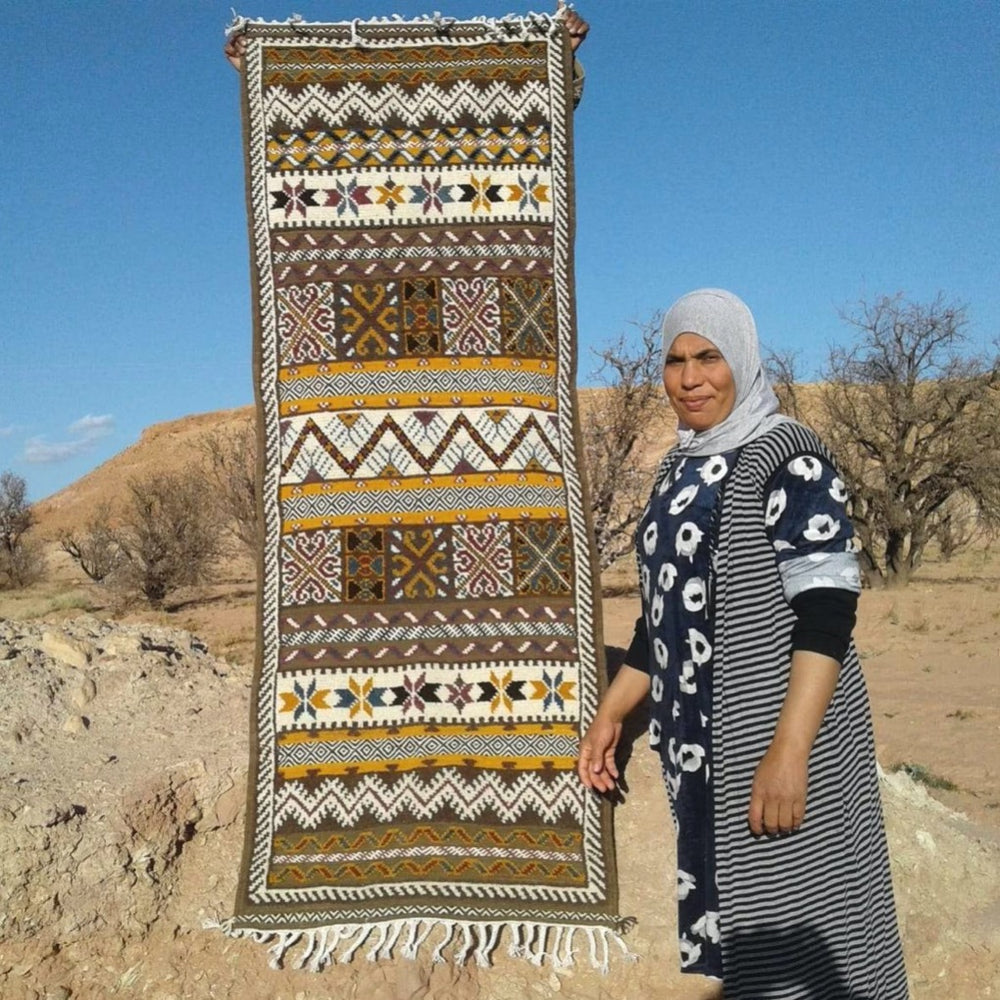Yellow Hanbel Moroccan Rug
- Popular Gift
- Free US shipping
- Low stock - 1 item left
- Backordered, shipping soon
- 6'8" x 2'7" x 1"
- Material: Naturally Dyed Wool, Natural Wool, Cotton String, Khrkum, Taroubiya, Pomegranate, Pine
- Technique: Vertical Loom
- Handmade and designed by Association Afous Gafous
One of two types that the association specializes in, Hanbels are easily the more popular item. The designs of each Hanbel incorporates a design that blends the personal taste of the association president with the colors and designs prevalent in the area surrounding Ouarzazate.
Meet the Artisans
Zahra Amzil: Zahra was born in Ouarzazate in the mid 70's and is married with three children. While she did not attend school, she is currently studying at a local center to learn how to read and write. Her primary source of income is through the sales of her rugs. She learned how to weave from her mom and now specializes in weaving and design at the association. Mouzil Zehra 38 years old, born in Lmdina village, married and has 3 kids. Zehra didn’t go to school but was able to attend literacy classes; she learned weaving from early age form her mother. Her specialty is making carpets and drawing on it. From her income she helps her family and she wished to have a prosperous future for this craftsman.
About Association Afous Gafous
Afous Ghoufous, or hand in hand, is a powerful saying in the Amazigh language in Morocco that signifies the solidarity of the Amazigh people. Fadma Mohsine, a weaver from a village outside of the city of Ouarzazate, is a living example of Afous g Afous. At the age of 15, Fadma unexpectedly became partially disabled in her extremities. Despite what many would consider a setback, she decided to continue learning how to weave from her mom. Fadma then combined what many villagers describe as her 'stunning intellect' with her weaving ability to create new and innovative designs using natural dyes -- the first in her village to do so. Despite Fadma's success as a weave, she still saw that many women in her village still struggled to develop their weaving craft and become financially independent. As such, she began teaching a group of women in her village how to weave which in 2009 would become what is now known as Association Afous G Afous. Today, Fadma provides mentorship to 15 women of the association. Hand in hand, the women have overcome many barriers to successfully grow their cooperative and hope that their sales will enable them to make a wider impact on all the women in her village.








